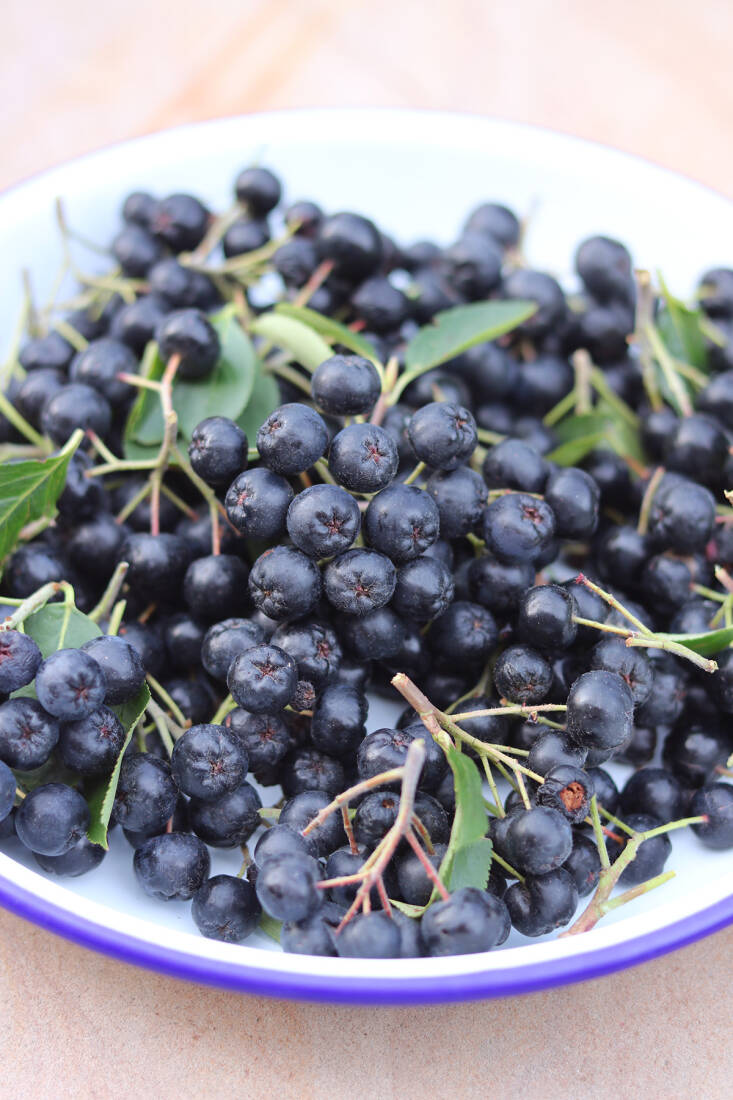[ad_1]
Whereas spring and summer season supply a bounty of untamed meals treasures, there’s a cornucopia of excellent issues to forage in fall. Fruits like native aronia and pawpaw, and imported and notoriously smelly ginkgo, ripen on bushes and shrubs. Hen of the woods, probably the most scrumptious and best of mushrooms to establish, begins to look on the base of hardwoods. At the same time as winter arrives and days contract with chilly, wooden ear mushrooms stay in season when the climate is damp. For anybody newly inquisitive about wild meals to forage or to develop (within the case of the fruit), listed here are six fall forages that make the season thrilling. They’re sustainable to collect, and straightforward to establish.
Images by Marie Viljoen.
Aronia

Like apples, the fruits of aronia are recognized botanically as pomes. Like apples they’re prepared to reap in early fall. Darkly tannic when underripe, aronia has a protracted season, and begins to show black and juicy in late August. The fruit persists nicely after frost and can be sweeter after a chilly snap’s bletting. It may be gathered earlier, however wait till total clusters are a midnight purple; any trace of crimson means they’re unpalatably acerbic, giving the shrub that chokeberry widespread identify. (Scarlet-hued fruit are a distinct species, Aronia arbutifolia, and can be utilized in the identical approach, however yield much less juice.)

Round mid-September (the place I stay), the primary forage of aronia is plump and mouth-puckering, however perfect for juicing by means of a foodmill. Freeze the juice in ice trays and retailer in luggage or a container. The frozen cubes of aronia juice can be utilized like crimson wine in cooking, including depth and complexity to slow-cooked stews and braises. An oz of juice shaken right into a cocktail offers it an antioxidant-rich spine (aronia in complement type is huge enterprise). A staple is my kitchen is slow-fermented aronia, dried, and utilized in baking and cooking like raisins. To ferment the fruit I cowl it in sugar in a jar, let it sit for weeks to months—the lid on loosely—earlier than straining it off and bottling the syrup (you should utilize this elderberry syrup methodology for the aronia syrup). The delectable, leftover fruit is air-dried slowly on trays and it retains indefinitely.


Ginkgo

Roasted ginkgo “nuts” is perhaps the final word bar snack.
New York Metropolis’s streets and parks are richly planted with Ginkgo biloba. The bushes’ tolerance of air pollution and their vivid fall coloration make them a beloved decorative. Feminine ginkgo bushes bear heavy crops of fruit, which drops to the grass or sidewalk beneath when ripe. This is without doubt one of the smelliest instances of the city 12 months. Other than knowledgable East Asian connoisseurs who collect the fallen fruit to course of in late fall (and city-dwelling raccoons and possums who love the reeking pulp), few urbanites love ginkgo for these odiferous weeks. However hidden inside that fruit is a nut-like shell. And inside that shell is a tasty deal with: a pistachio-green kernel that tastes one thing like a roast chestnut crossed with tofu.
[ad_2]


